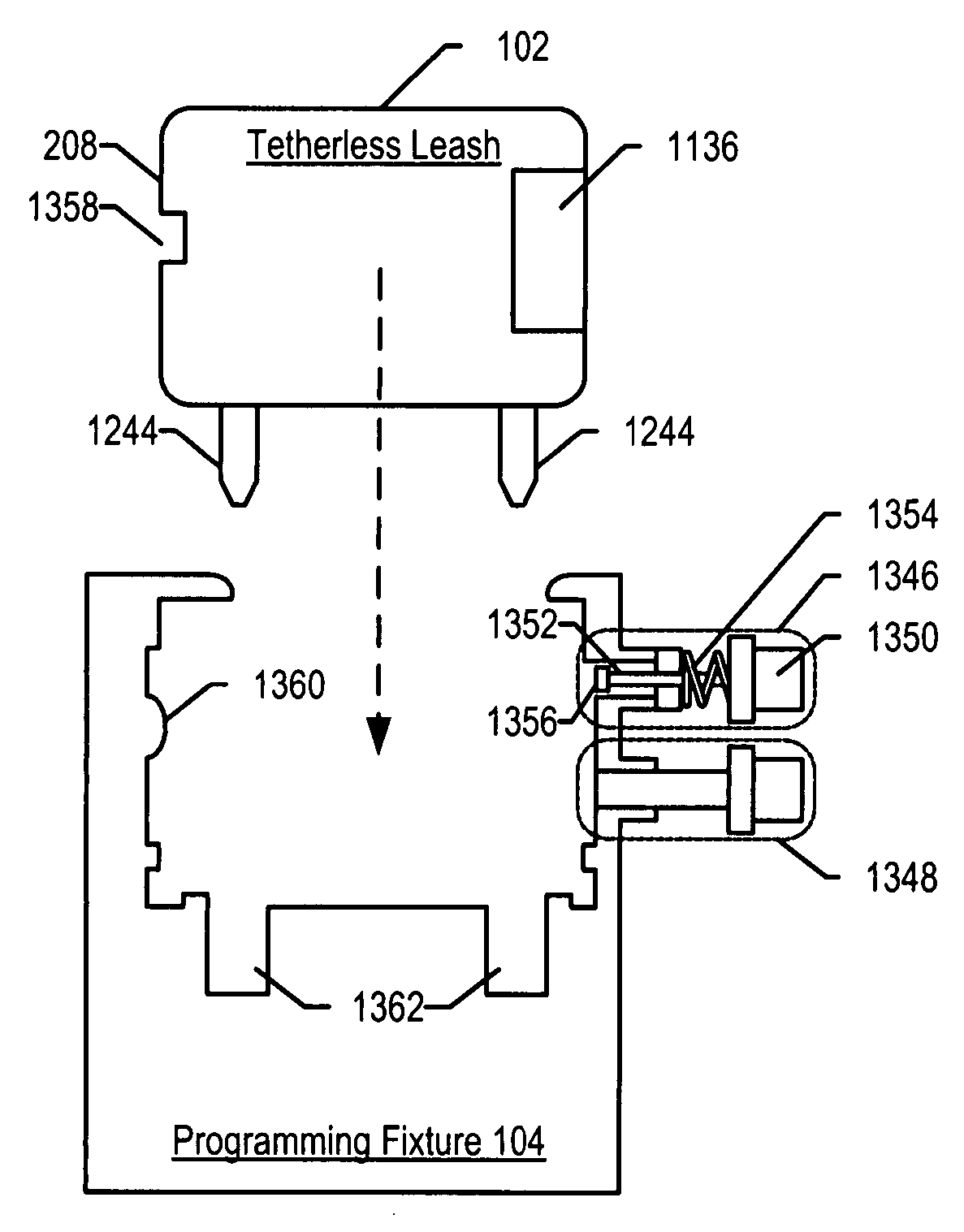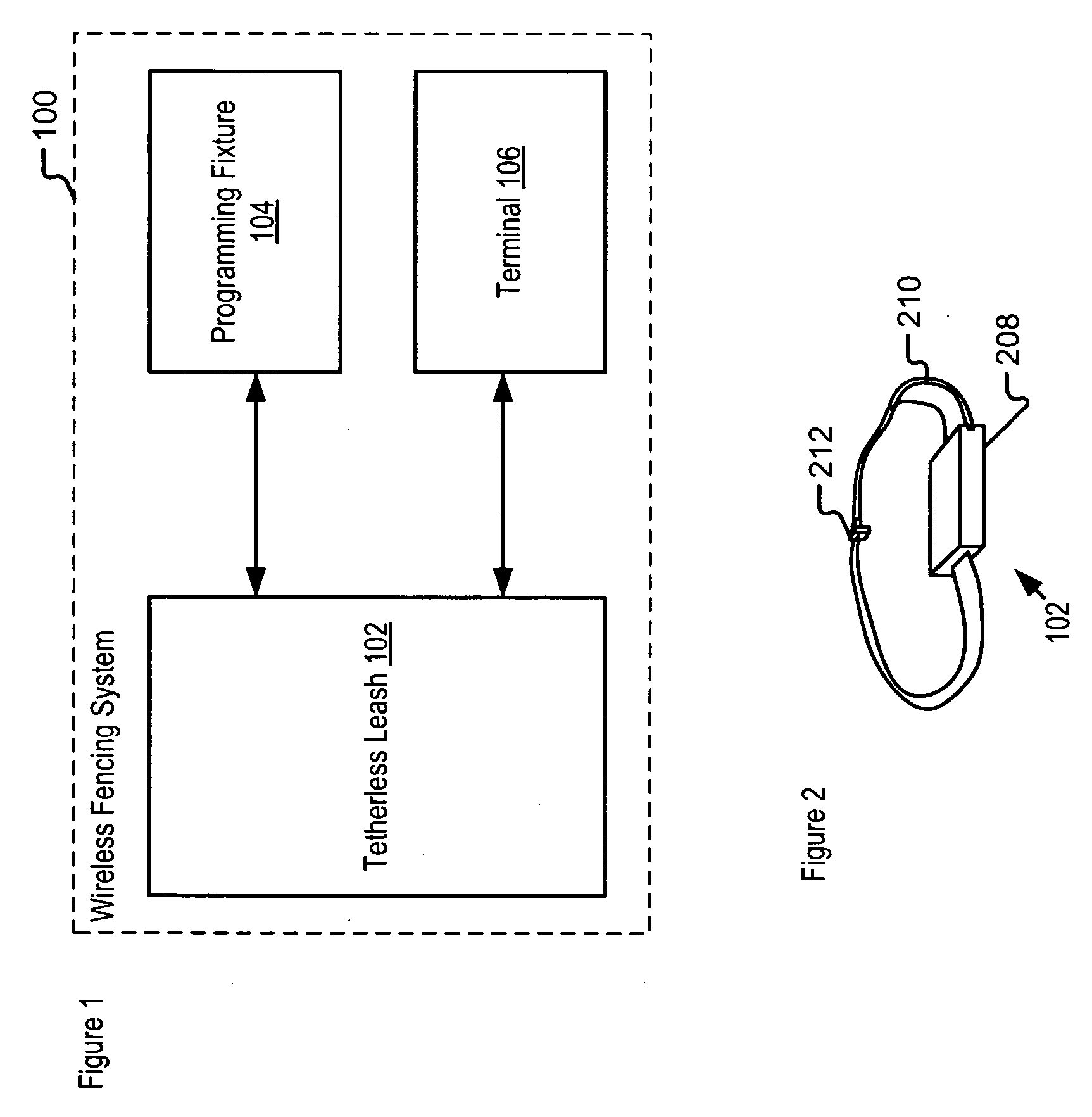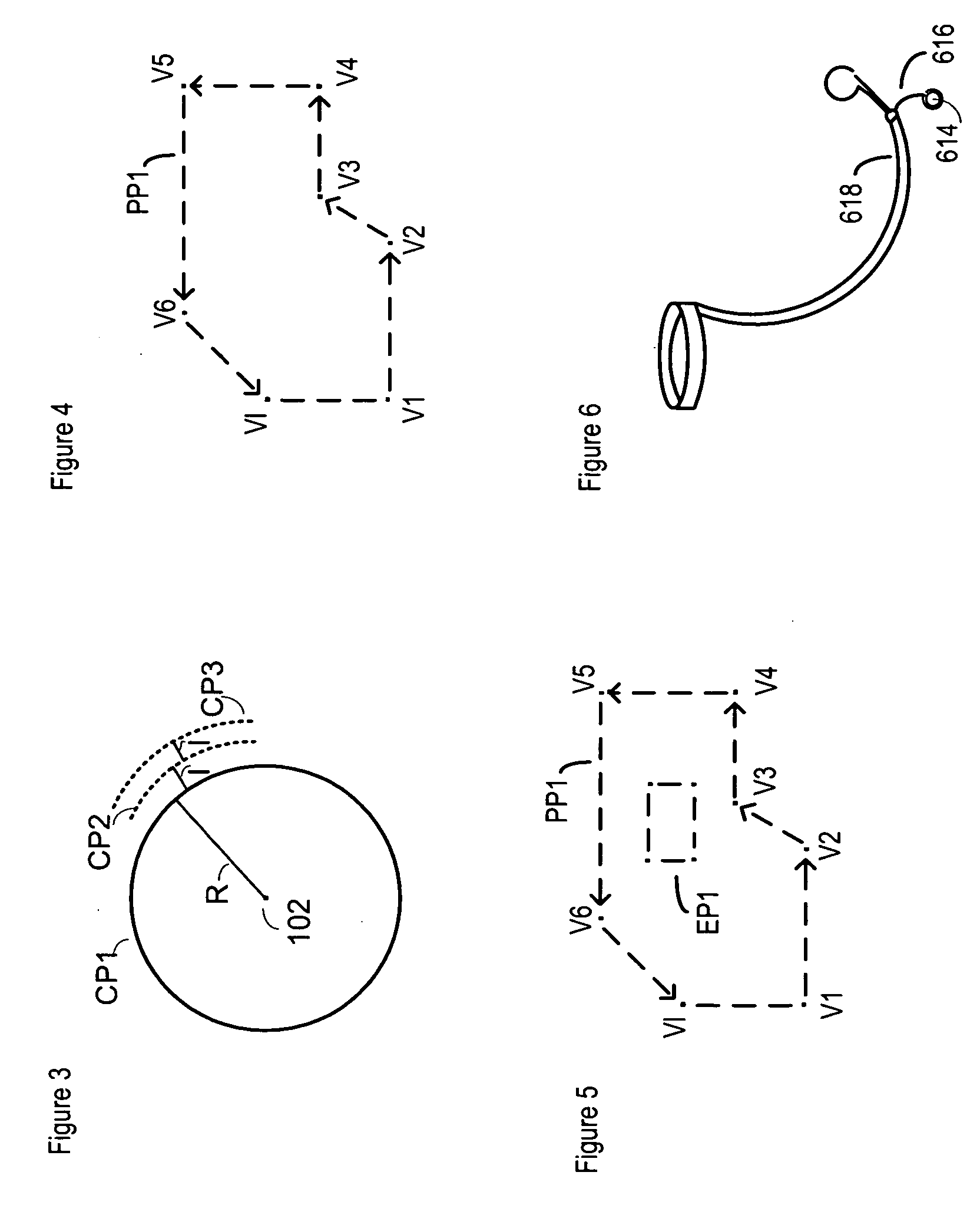Programming fixture for a virtual fencing system
a virtual fencing and fixture technology, applied in the field of fencing systems, can solve the problems of implicit relying on untested assumptions, loss of control of an animal, and animal in jeopardy
- Summary
- Abstract
- Description
- Claims
- Application Information
AI Technical Summary
Benefits of technology
Problems solved by technology
Method used
Image
Examples
Embodiment Construction
The illustrative embodiment of the present invention is a wireless fencing system. A common use for the wireless fencing system described herein is to confine an animal within a region and / or exclude an animal from a region. As used hereinafter, the term “confine” means “confine and / or exclude” unless otherwise indicated.
For the purposes of this specification, the term “confinement zone” refers to the region in which the animal is confined (e.g., a pet owner's backyard, etc.) and the term “exclusion zone” refers to the region from which the animal is excluded (e.g., a garden, a pool, etc.). As used hereinafter, the term “confinement zone” means “confinement zone and / or exclusion zone” unless otherwise indicated. For the purposes of this specification, the term “animal” and its inflected forms mean pets, farm animals, livestock, and homo sapiens. Other terms are defined throughout this specification.
OVERVIEW
A brief overview of a wireless fencing system in accordance with the il...
PUM
 Login to View More
Login to View More Abstract
Description
Claims
Application Information
 Login to View More
Login to View More - R&D
- Intellectual Property
- Life Sciences
- Materials
- Tech Scout
- Unparalleled Data Quality
- Higher Quality Content
- 60% Fewer Hallucinations
Browse by: Latest US Patents, China's latest patents, Technical Efficacy Thesaurus, Application Domain, Technology Topic, Popular Technical Reports.
© 2025 PatSnap. All rights reserved.Legal|Privacy policy|Modern Slavery Act Transparency Statement|Sitemap|About US| Contact US: help@patsnap.com



